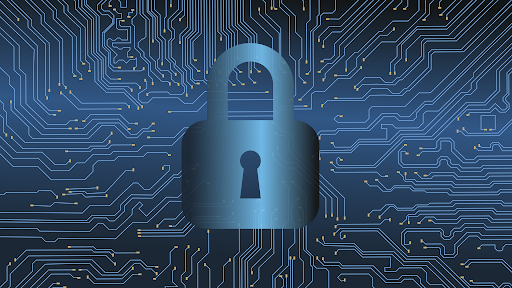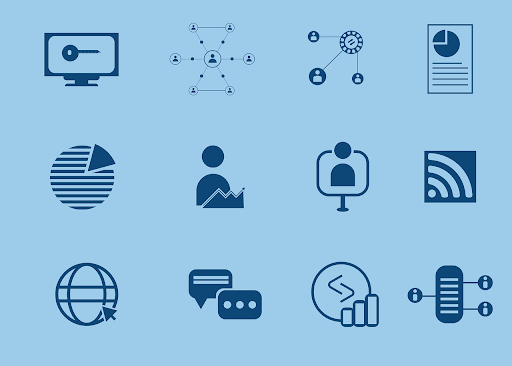The evolution of technology is a key distinguishing factor of the 21st generation. These advancements aim to ease tasks and improve the efficiency of humans. They also help to overcome the various drawbacks of humans. An example of a human drawback is error-proneness.
However, the embracement of technology in various industries has also brought up cybersecurity issues. Cybersecurity entails the protection of computer devices and data from malicious activities. Examples of malicious activities are unauthorized data manipulation or deletion.
Cybersecurity is a common concern in this era, with about 30,000 websites getting hacked daily. These statistics denote the intensity of cybersecurity in this generation. Cyberterrorists continuously change their attack methods. Some of the frequent attack methods are:
- Social Engineering
- Phishing
- Malware attack
With cyberterrorists constantly improving their attack mechanisms, cybersecurity also has to advance. This has brought up the integration of Artificial Intelligence in the cybersecurity field.
Artificial intelligence is the simulation or mimicking of the human thought process by machines or computing systems. AI has numerous benefits in cybersecurity.
In this article, we shall discuss the various ways that Artificial Intelligence reduces Cybersecurity threats.
-
Table of Contents
Big Data Management and Handling
A recent study revealed that in the year 2020, the average person generated 1.7 megabytes of data per second. This analysis depicts the large amounts of data that humans generate. The numbers multiply when it comes to businesses.
Data management is critical in all types of businesses, from start-ups to well-established enterprises. Good data handling techniques help to ensure their cybersecurity is not compromised. For organizations, massive amounts of data are constantly moved from the company to its clients and vice versa.
This, therefore, means that they should implement methods to protect the data from malicious people. Manual data analysis by cybersecurity personnel is not an efficient method due to the large data amounts.
This is where Artificial Intelligence comes in. Artificial Intelligence learns how to identify data threats or malicious data hidden in the day-to-day data by the business. AI recognizes data trends and alerts the security administrator when malign material is detected.
The automated nature of Artificial Intelligence grants it the ability to peruse through vast amounts of internet traffic and data. AI is integrated with a Residential IP proxy to mask IP addresses and ensure secure data transmission.
An IP Proxy acts as an intermediary between an internet user and the server being accessed. IP proxies help in masking the IP addresses of the user. With this, IP proxies secure the user and also help in accessing geographically restricted content.
When transferring data using Residential IP Proxies, AI can analyze data on transmission and detect all threats encompassed in the data.
The capability of handling big data is the most significant leap by Artificial Intelligence when it comes to cybersecurity.
-
Management of Vulnerable Points on Information Systems
One of the most vital aspects of cybersecurity is spotting potential security flaws and patching them up. However, the process of identifying vulnerable points in an information system can be a tiresome task.
Artificial Intelligence can identify information system vulnerabilities. An AI system can detect a vulnerability by continuously analyzing data transmission. After detection, it identifies vulnerabilities by analyzing the whole information system.
After the AI system identifies the vulnerability, it assesses the existing security measures to calculate their efficiency in managing threats. If any upgrades are necessary, the system notifies the security administrator of the current security status.
When determining whether or not to use AI security systems, keep in mind that AI systems are faster than cybersecurity personnel. AI systems drastically improve a businesses’ manifold for problem-solving.
It is good to implement an AI security system to work alongside cybersecurity personnel. This allows the person to focus on risks that require human reasoning to analyze and secure.
-
Execution of Repetitive Security Processes
The substantial contribution of robots in the manufacturing industry is the execution of repetitive processes that would be boring to humans. For humans, executing repetitive processes often leads to boredom and reduces their accuracy when carrying out the process.
This advantage of using robots over humans in manufacturing also extends to using Artificial Intelligence in computing. The tasks of cybersecurity personnel in organizations and companies are often repetitive processes involving analyzing the network and data transmission channels.
These tasks end up boring and tiring the personnel, therefore, reducing their efficiency. With the use of Artificial Intelligence, cybersecurity personnel can let the AI system handle repetitive security practices. The AI system will be better at it because it will eliminate the drawbacks of humans.
AI security systems can handle tasks like network architecture analysis and data scrutinization.
-
Early Threat Identification
A recent leap in cybersecurity is using Artificial Intelligence to warn users and cybersecurity personnel of possible threats. This technology entails the combination of existing threat intelligence, machine learning techniques, and artificial intelligence.
This combination creates an independently running computer software that can analyze a computer and identify threats. For example, if a hacker sends an email containing a phishing link, the software will analyze it in the background and give a security warning to the user.
When using Artificial Intelligence for threat identification, it is integral that the threat intelligence database in use is always up to date.
Threat identification systems are a perfect cybersecurity measure when working hand in hand with cybersecurity personnel. Once the system identifies a threat, it sends a notification to the security personnel.
The cybersecurity personnel handles the threat by eliminating it and preventing the security threat from reoccurring.
-
Bot Protection
In today’s world, a huge percentage of internet traffic comprises bots. A bot is a program or software that is designed to execute tasks on the internet automatically. These tasks can be good or malicious.
Due to the automated nature of bots, it is tough for cybersecurity personnel to fight them. Artificial Intelligence, on the other hand, counters malicious bots and keeps your internet traffic safe.
Artificial Intelligence builds a robust understanding of internet bots through the use of Machine Learning technology. With this understanding, the AI system can distinguish between good and malicious bots.
Conclusion
Cyberterrorists use continuously evolving methods to gain access to information systems. As a result, it is critical to review your cybersecurity procedures regularly to ensure that you are protected against new attack approaches.
The use of Artificial Intelligence in AI also brings this advantage to cybersecurity. By using Artificial Intelligence to counter cyberattacks, the systems can also study the attack methods used by hackers and offer comprehensive reports.
These reports can be used to arm systems and protect them from the new attack methods.









